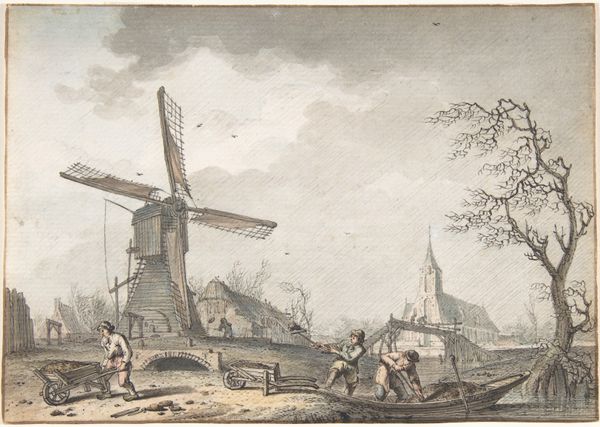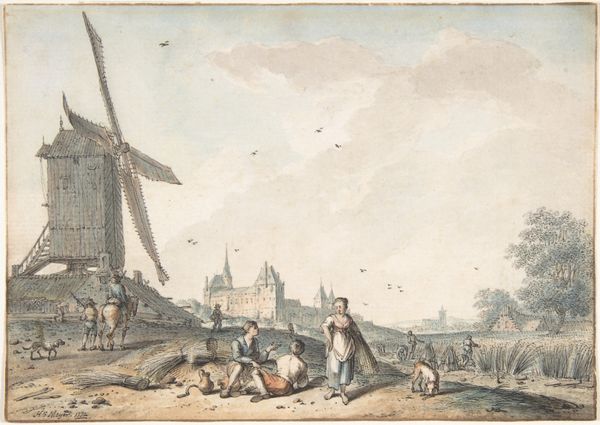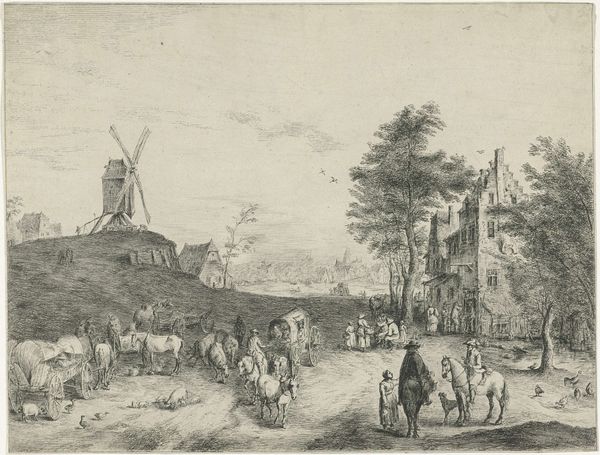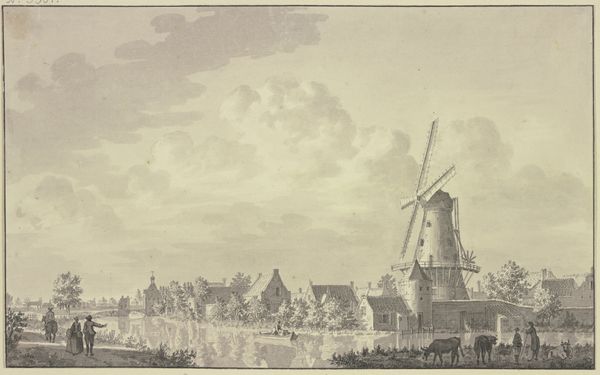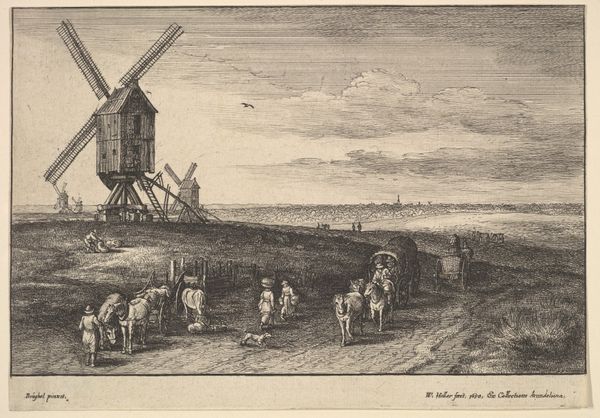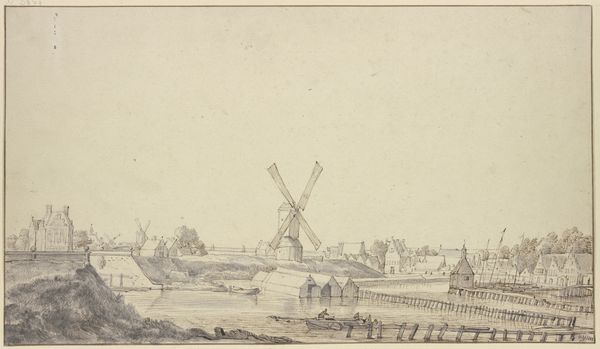
drawing, print, paper, watercolor
#
drawing
#
dutch-golden-age
# print
#
landscape
#
paper
#
watercolor
#
cityscape
#
genre-painting
#
miniature
Dimensions: sheet: 5 3/16 x 7 7/16 in. (13.1 x 18.9 cm)
Copyright: Public Domain
Editor: Here we have Hendrik Meijer’s "December," created in 1772. It's a watercolor and ink drawing. It seems quite muted; the coloring feels wintry, almost as if the colors are fading like the end of the year itself. What do you see in this piece? Curator: The eye is immediately drawn to the composition. The strong diagonal created by the windmill against the relatively flat horizontal landscape creates a powerful tension. Consider the dynamism introduced by this contrast; it disrupts any sense of placidity, hinting at an energy contained within the scene, wouldn’t you agree? Editor: I see what you mean! The windmill sort of cuts through the stillness of the landscape. So, is that the key structural element here, this diagonal thrust versus the horizontal base? Curator: Precisely! Also consider how Meijer’s line work creates variations in texture, distinguishing the surfaces of different forms – the coarse brick of the mill versus the smooth sky, for example. Are these merely representational details, or do they contribute to a broader exploration of form? Editor: That makes me think about the subtle gradations in color, especially the sky and how those shades define the clouds. I hadn't thought of those visual aspects before. It's so much more than just a picture of a Dutch scene. Curator: Exactly. The artist employs a structured visual vocabulary. Notice the careful construction of space and form, achieved with restrained washes of color. Its artistic intent operates beyond simple mimetic representation. This suggests an almost geometric sensibility at play. Editor: It’s amazing to see how focusing on form and technique opens up new ways to understand a work like this. I definitely look at it differently now! Curator: Indeed. Form is never empty; it resonates with intention and structure. Examining the artwork this way helps see beneath the surface.
Comments
No comments
Be the first to comment and join the conversation on the ultimate creative platform.
